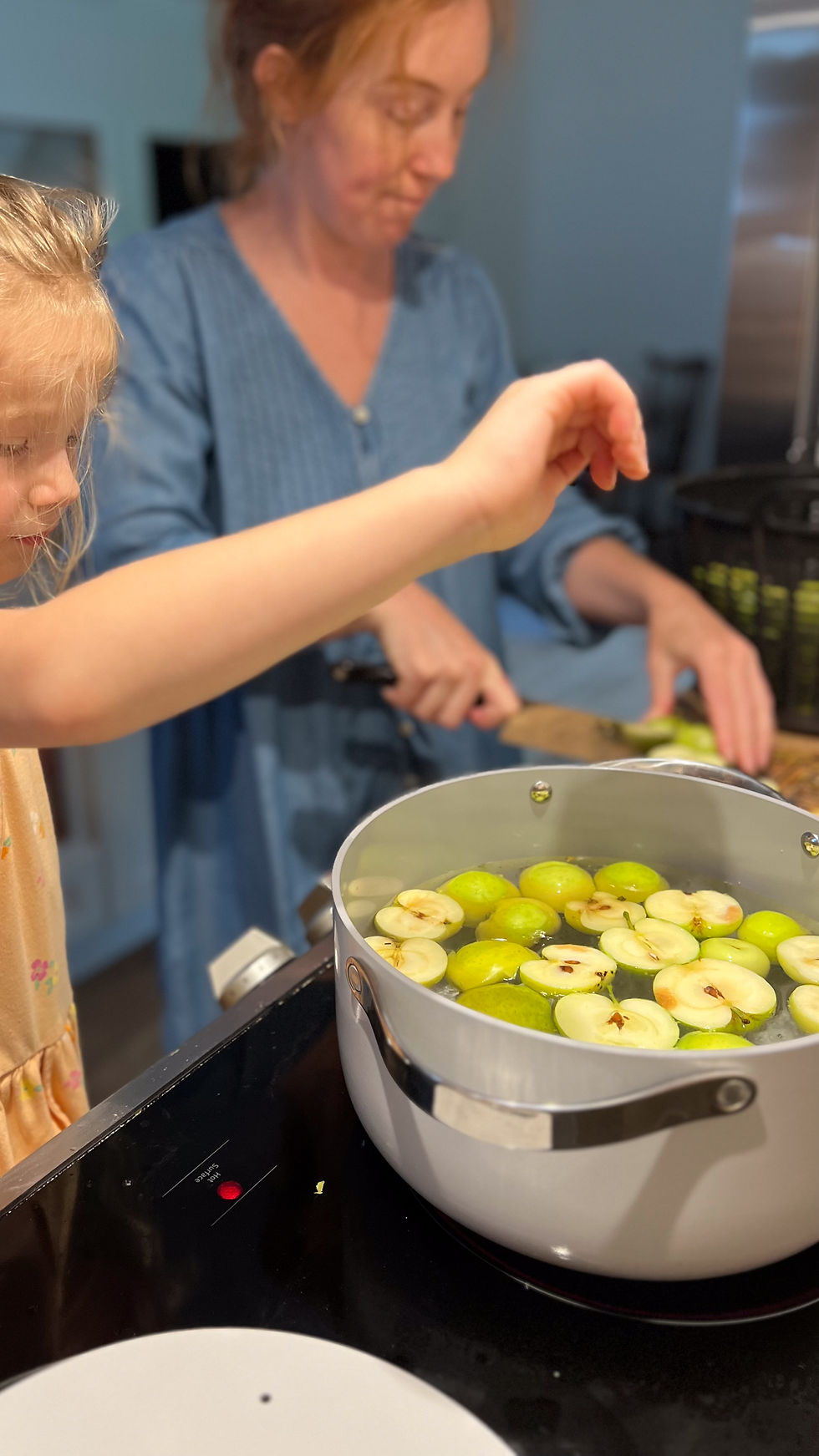In The Garden With Meaghan Ashworth
- Sarah Pavia

- May 15, 2024
- 4 min read

Meaghan Ashworth has always had a love for nature and gardening. Farming has run in her family for generations – her grandfather was a dairy farmer, and today she has family that own a local flower farm. For as long as she can remember, she’s been growing flowers and vegetables, budding a deep appreciation for gardening and outdoor living.
A few years ago, Meaghan became a busy mother of two and decided to leave her full-time job to focus on raising her children. She sought to connect with like-minded moms with a love of nature and desire to raise their children with the same passion, so she started a webpage and an online presence to see if anyone shared a similar interest. Many did – Meaghan has amassed an online following of 18.7K on her Instagram channel, meg_ashworth, finding many other moms with similar goals in homemaking, wellness, and gardening.
On her page, Meaghan talks about raising her children with a love of nature. Meaghan suggests “Relish in the simple things. As an adult, you tend to forget the little things that matter to a child. Noticing those moments in nature even right in your backyard is a start – the blue bird on the feeder, the wildflowers growing in the grass… the animal tracks in the mud.”
Meaghan says there are many benefits for children:
Engaging in activities like gardening involves movement, digging, lifting, and bending, all of which help improve strength, coordination, and motor skills
Growing and consuming real, fresh food from the garden provides essential nutrients to support overall physical health
Time spent outdoors reduces stress and anxiety (for both parents and kids!)
Gardening promotes relaxation, mood bosting, and increased feelings of happiness and well-being
Meaghan’s children are very active in the kitchen, and together they experiment with old and new recipes. Her family grows as much food as they can, such as lettuce and herbs, beans, peas, tomatoes, garlic, mushrooms, potatoes, and edible flowers, and buy the rest at local farmer markets whenever possible. Her children especially love coming up with healthy snacks using real foods. With items from their garden and local markets, the family creates their own ice cream, beef jerky, granola, muffins, and more.
Two of their favorite recipes are Healthy Orange Creamsicle Popsicles and Fruit Roll Ups:
Healthy Orange Creamsicle Popsicles
equipment:
Mixing bowl, Whisk, Popsicle mold
ingredients:
1 can coconut milk, 1 cup orange juice, ¼ cup maple syrup, 1 tsp vanilla bean paste
instructions:
Mix all ingredients in a bowl. Pour into popsicle molds. Freeze 6 hours or overnight. Run under warm water or allow popsicle mold to sit on the counter for 5-10 minutes to release popsicles from the mold
Fruit Roll Ups
equipment:
Pot or pan, blender or food processor puree the fruit, behydrator (removes moisture and creates the desired texture), parchment paper (prevents sticking during dehydration)
ingredients:
Fresh, ripe fruit (apples, strawberries, blueberries, mangoes, or a mix for a burst of flavor), natural sweetener (optional, depending on the sweetness of the fruit. Consider honey, maple syrup, or agave nectar), lemon juice (enhances flavor and acts as a natural preservative)
instructions:
Prepare the fruit: Wash, peel (if necessary), and chop the fruit into small pieces. Cook fruit on stovetop with a splash of water until soft to help speed up dehydrator time and helps prevent fruit roll-ups from being brittle. Blend or process puree fruit until smooth, adding lemon juice and sweetener if desired. Spread on dehydrator sheets: Line dehydrator trays with parchment paper, and evenly spread the fruit puree onto the sheets. Set the dehydrator to a low temperature (around 135F or 57C) and let it run for 4-6 hours, or until the fruit leather is no longer sticky. Once dehydrated, cut the fruit leather into strips and roll up. Store in an airtight container

Meaghan’s Tips and Tricks for Incorporating Children into Gardening and Outdoor Living
Lead by Example
Involve your children in what you’re doing – whether you’re growing an herb garden, baking cookies, or going on a hike. Allowing meaningful engagement keeps them interested, boosts their self-esteem, and inspires their imagination.
Allow for spontaneity and flexibility in your children’s imagination. Let them lead with their interests and curiosities, and allow time in nature for unstructured play and exploration. This allows children to connect with nature on their terms.
Embrace Seasonal Change
Take advantage of the changing seasons to explore different aspects of nature throughout the year! In Spring, look for signs of new growth and budding flowers, and teach children about the cycles of a flower’s growth. During Summer, enjoy picnics and nature walks while taking in the surrounding nature. In Fall, collect colorful leaves and talk about how leaves make great mulch for budding gardens and growing grass. Show children how to make gardens last by re-potting plants and moving them inside. And during Winter, explore animal tracks on hikes!
Take Advantage of Local Opportunities
There are many local family-friendly hiking trails and farms for apple picking, berry picking, and farmers markets to help develop appreciation for organic foods and nature as well as to strengthen family time together.
Start Small
If you don’t have a garden yet, there are plenty of online resources to learn how to get going! An herb garden or a small planter in your kitchen can be a start – grow something easy you’ll want to snack on.

It’s important to Meaghan that her children learn where food comes from and how it is made, and building their love of nature and gardening has established a healthy precedent for future living. Follow Meaghan for more gardening and nature tips at www.meaghanashworth.com
























Comments